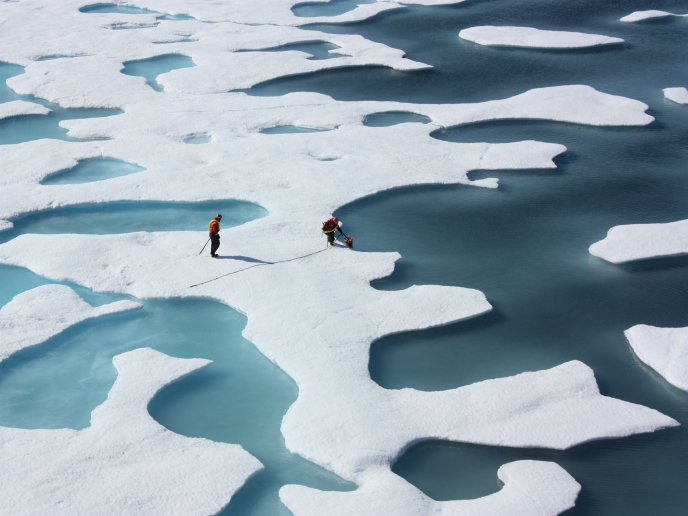New tools to combat the ripple effects of a warming Arctic
Faced with a changing climate, businesses, policymakers and local communities need to access reliable weather and climate information to safeguard human health, well-being, economic growth and environmental sustainability. However, important changes in climate variability and extreme weather events are difficult to pinpoint and account for in existing modelling and forecasting tools. Moreover, many changes in the global climate are linked to the Arctic, which according to the Arctic Report Card is warming twice as fast as anywhere else on Earth. This is making weather and climate prediction particularly challenging.
Improving forecast accuracy at longer timescales
A large consortium of international partners has established the EU-funded Blue-Action project with the aim to help society better understand and prepare for the effects of a changing Arctic climate. The project evaluates the impact of Arctic warming on the Northern Hemisphere and develops new techniques to improve forecast accuracy on seasonal to decadal timescales. “We aim to improve the safety and well-being of people in the Arctic and across the Northern Hemisphere, reduce the risks associated with Arctic operations and resource exploitation, and support evidence-based decision-making by policymakers worldwide,” notes project coordinator Steffen M. Olsen.
Ocean observations, climate modelling and climate services
Blue-Action is working on a new and exciting research area that closes the gap between short-term weather forecasting and long-term climate change projections. “We are probably the only project that engages both with ocean observations and climate models, contributing to the co-design of effective climate services,” adds Olsen. Ocean observations are crucial to making near- and long-term climate predictions and also forecasting the sea-level rise and changing climate patterns in a warming world. Blue-Action is involved in global programmes for ocean observations, including the Overturning in the Subpolar North Atlantic Programme that studies the link between water mass transformation at high latitudes and ocean circulation in the North Atlantic. “For the first time we shed further light on the link between variable Atlantic ocean currents, the Atlantic meridional overturning circulation (AMOC), the ocean heat content and the sea surface temperature. We also demonstrated that the melting of the Greenland ice sheet plays a limited role in weakening ocean circulation in the AMOC, but can possibly affect climate variability on a decadal scale,” explains Olsen. The project also employed novel techniques to initialise climate models that forecast the conditions in the North Atlantic years ahead. “We can now provide useful information on climate conditions over Europe for the winter, sea ice conditions for the next few years and oceanic conditions for the next decade,” adds Olsen. Using the new models, researchers revealed further clues of how ocean heat in the Barents Sea affects climate change in the Arctic. Ultimately, project partners developed climate service tools that facilitate decision-making. These include a prototype app for optimising snowmaking in ski resorts, an early warning system for heat waves in cities, and a system that analyses extreme weather conditions in the Arctic for the shipping industry. “In the shipping industry, one of the key questions is how to avoid the storms, especially in the Arctic. The prototype of an interactive web map we co-developed in Blue-Action, allows us to assess the risks of polar lows and adapt shipping routes accordingly,” concludes Øivin Aarnes, a principal specialist for Environmental Risk and Preparedness at DNV GL - Oil & Gas.
Keywords
Blue-Action, Arctic, Northern Hemisphere, extreme weather, climate change, climate service, climate prediction, weather forecasting, AMOC, Atlantic meridional overturning circulation

